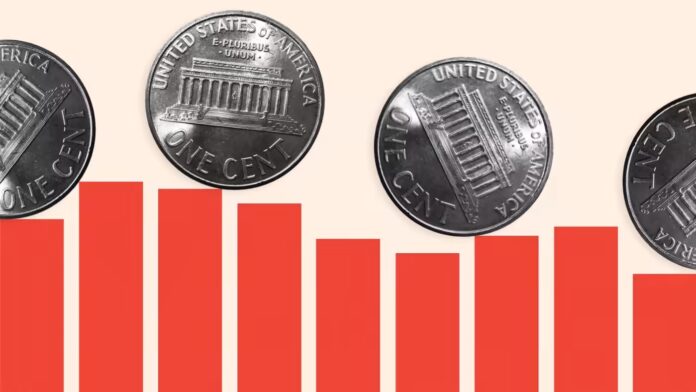They pile up in drawers. They’re taken or left on a whim at store counters. Vending machines and parking meters won’t accept them. And last year, they cost the US Treasury $100mn more to produce than they’re worth. Despite all this, the penny — America’s copper-plated one-cent coin — persists.
For decades, US lawmakers, journalists and penny-jar owners have debated whether the coin’s declining value justifies its continued production. All the while, it gets less valuable with each passing year. Inflation has hit it from both sides: production and distribution costs have gone up while the actual utility of the coin goes down.
While the volume of cash transactions may be declining, the penny has never cost more to produce than it did in 2022, at 2.72 cents per one-cent coin. Meanwhile, it is now worth just 80 per cent of its value in 2017, the last time a major legislative effort to phase it out was introduced.
That bill, the “Currency Optimization, Innovation, and National Savings” or Coins Act, would have stopped production of pennies for 10 years, followed by a study of the repercussions. It also proposed reformulating the metal composition of the nickel, or five-cent coin, and swapping the dollar note for a coin. The non-partisan Government Accountability Office estimated that the changes to small-coin production would save hundreds of millions of dollars, but was sceptical of changes to the dollar coin. The bill never went anywhere.
The last time the US successfully eliminated a denomination of currency was in 1857, when it got rid of the half-cent coin. The Coinage Act of 1857 discontinued its production at a time when it was worth far more than the modern penny is.
Perhaps the most vocal advocate for keeping the penny is Americans for Common Cents, a lobbying group whose funders include Jarden Zinc Products, a company that produces and sells coin blanks to the US Mint. The lobbying group’s own polls show up periodically in the news, always concluding that the penny remains popular with a slim majority. In 2006, the group arranged for entertainer Kevin Federline to show up in Times Square wearing an Abraham Lincoln mask and declare that he was, “feel[ing] good about the penny.”
The main argument put forth by penny defenders is that eliminating the coin will result in businesses rounding up prices, costing Americans more on their purchases — particularly those who are lower-income and more likely to be using cash.
Missing from this argument is a convincing explanation as to why prices would go up more frequently than down, if rounding to the nearest nickel. The pre-tax price of many consumer goods does end with “.99”, suggesting a round-up, but due to another unfortunate American monetary custom, sales tax is not included in most sticker prices. This means final prices are no more likely to end up being more expensive than less. An academic study of 200,000 convenience stores also concluded that rounding would not negatively affect consumers.
Analysis
I find this article helpful because it outlines just how much our society still relies on physical cash and coins, despite how much we’ve shifted to virtual credit and currency. One group advocating to keep the penny uses the stance that eliminating the coin will lead to businesses rounding up prices, affecting lower-income citizens who are more likely to be using cash. My takeaway from that (besides the fact that sales tax gets rid of the 99 cents anyway) is that our current financial system was founded on the basis of physical cash, since stores would use the $0.99 from the $5.99 to essentially earn another dollar without making it seem that way, thanks to the penny they give back in change. As we slowly move evolve from a cash-based society, should the processes we use in consumerism and banking evolve as well? Just how many common banking practices are trying to force cashless banking into a format intended for paper and metal?
Source
Learner, S. (2023, April 15). Not A penny more: The time to abolish the US coin has come. Financial Times. https://www.ft.com/content/2a4332d1-9faa-4325-a2b7-26203c44f12d




